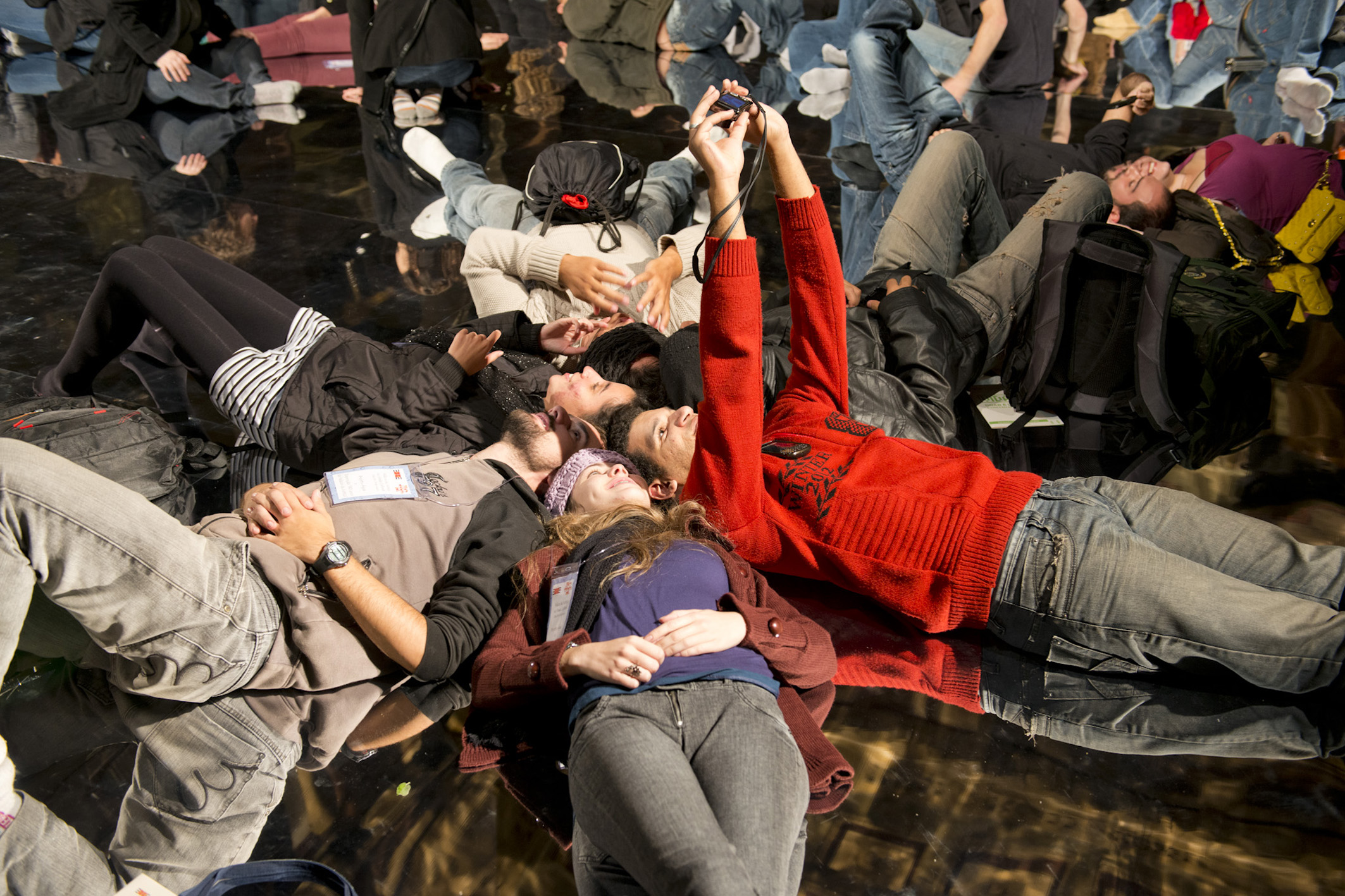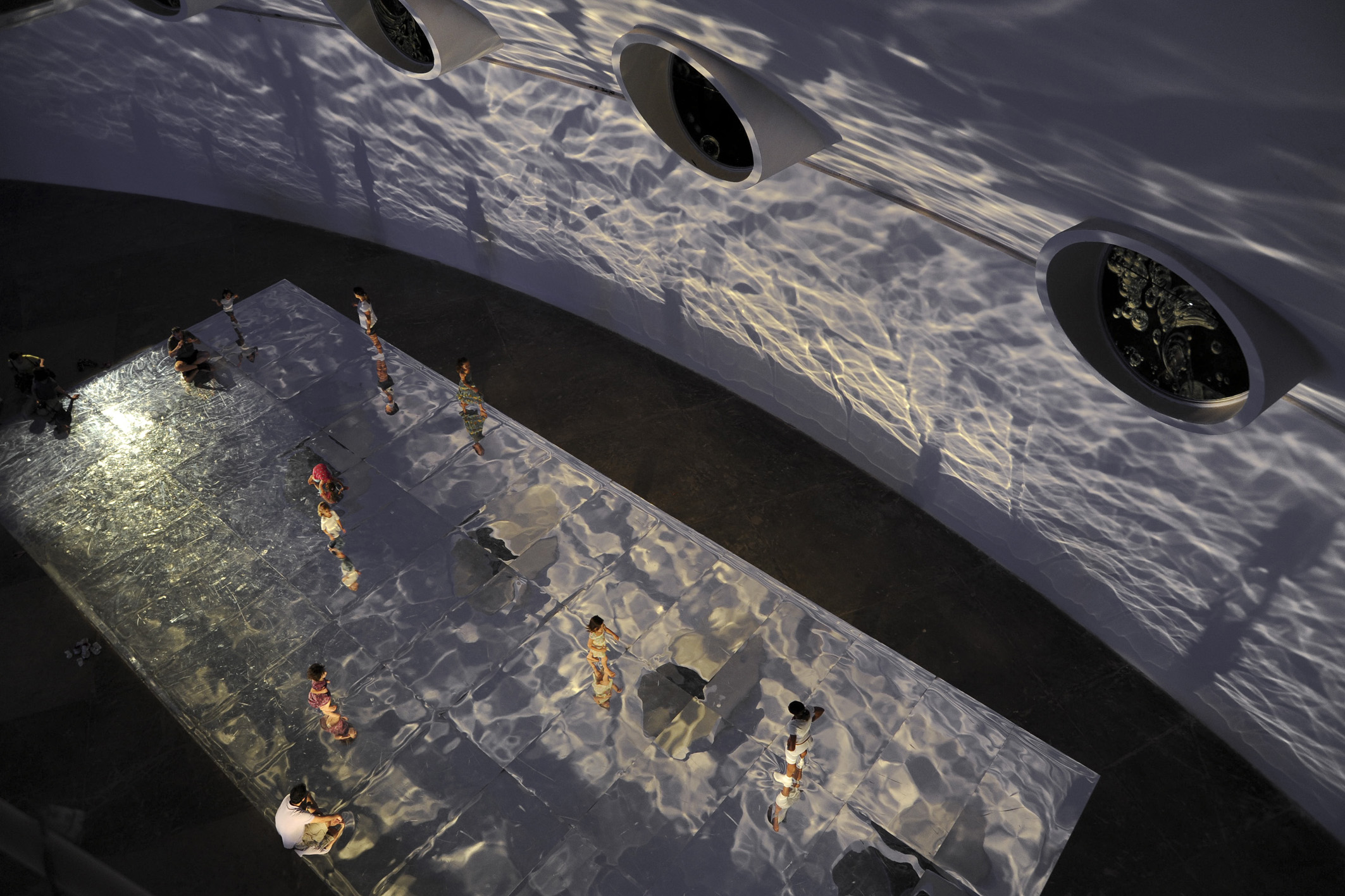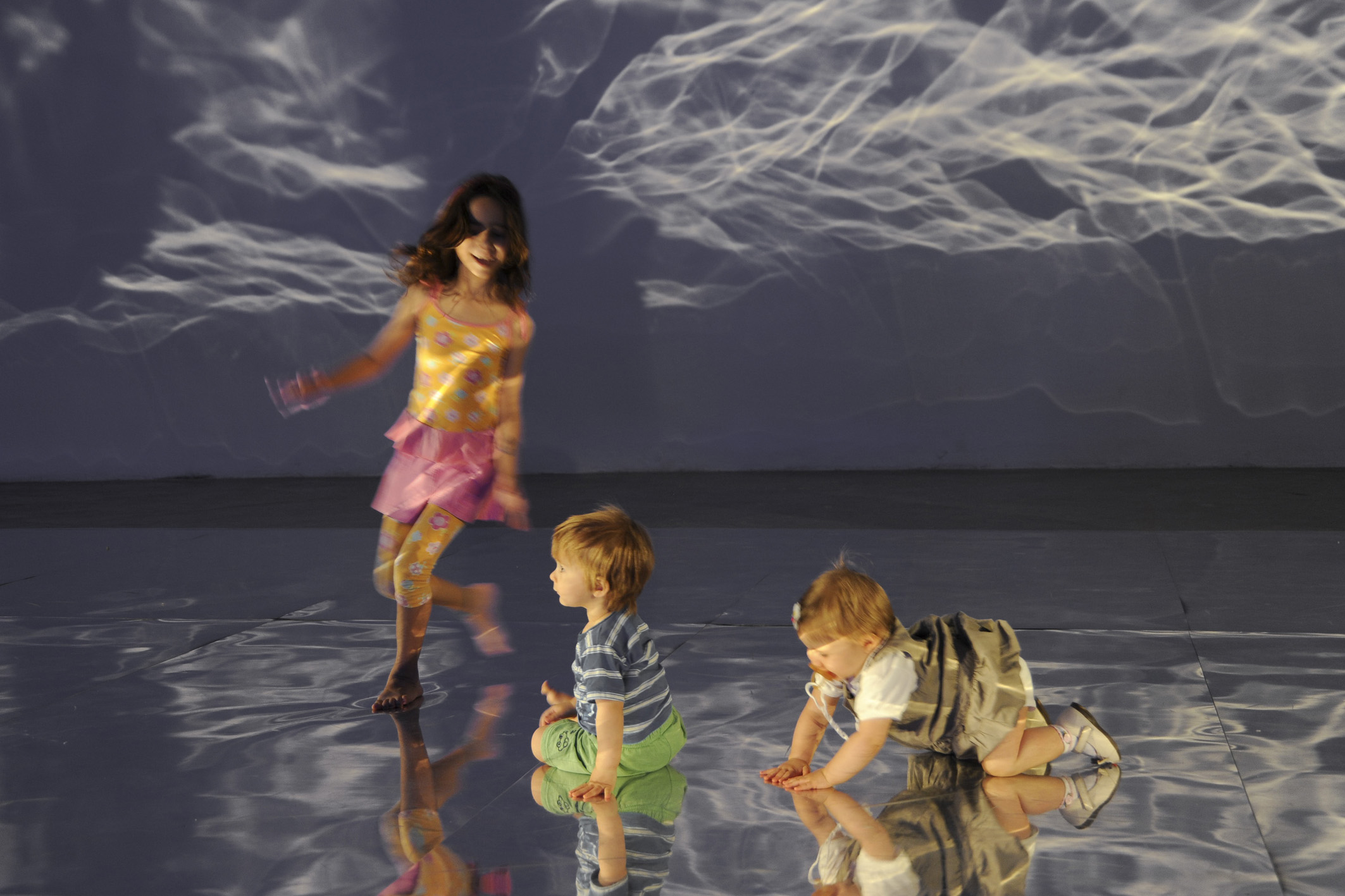WATER | ÁGUA [ 2010 ]
ENGLISH_
[ with Raquel Kogan ]
WATER IS A SITE-SPECIFIC INSTALLATION. a tactile-visual interface: a very large flexible observation mirror, designed to undergo distortions in function of the weight and position of the visitor
PORTUGUÊS_
[ com Raquel Kogan ]
ÁGUA É UMA INSTALAÇÃO SITE-SPECIFIC. UMA INTERFACE TÁTIL-VISUAL E UM ESPELHO DE OBSERVAÇÃO FLEXÍVEL, de grande dimensão, desenhado para sofrer deformações em função do peso e da posição dos visitantes.
It is comprised of 45 Tecnovac plaques, 1 mechanical tactile sensing system and 05 ellipsoidal light projectors (ETC 750w).
The 45 Tecnovac plaques are connected and, the current configuration, form a mirrored surface of 7.2 meters wide by 18 meters long, by 1 millimeter thick.
The function of this large mirror is to reflect the light that falls onto it and to project the resulting shadows of the interactors, constantly changing as they move, on the installation.
The mechanical sensing system is composed of 52 dark grey, density 35 foam mats and adhesive tapes. Placed on the surface of the Tecnovac plaques, this device has a threefold function:
1. allows the user to distort the smooth surface of the mirrored plaques in function of his relative weight and position;
2. makes it possible to enlarge alterations in the angular path of the light as it falls on the mirrored surface;
3. serves to simulate, in the interactors, sensations that are similar to walking on liquid surfaces (i.e., feet sinking into a puddle or shallow water).
Numerous users can simultaneously walk on this installation and this action concentrates and disperses the rays of light that fall on the mirrored surface.
Thus, when stepping on the installation, the users alter the qualities of the liquid mirror—know the installation´s depth and spatial dimensions and alter the reflection of the projected image while interacting with one another.
Sua função é refletir a luz que incide sobre ele, simulando reflexos de água, e projetar as sombras dos interatores na arquitetura.
Vários usuários podem caminhar simultaneamente sobre a obra. Pisando nela, alteram as qualidades do espelho flexível, conhecem sua profundidade e as dimensões espaciais da instalação, alteram o reflexo da imagem projetada e interagem uns com os outros.
O sistema de sensoriamento tátil-mecânico é composto de mantas de espuma e fitas adesivas mecânicas. Localizado sob a superfície das chapas espelhadas, esse dispositivo tem tripla função. Primeiro, permite aos usuários deformar a superfície lisa das chapas espelhadas em função de sua posição relativa e peso. Possibilita também ampliar alterações na trajetória angular da luz que incide sobre a superfície espelhada, criando movimento e alterando a imagem projetada dos reflexos e das sombras dos interatores. Além disso, pode simular sensações equivalentes a caminhar sobre superfícies líquidas – como afundar o pé em poças ou águas rasas.



















